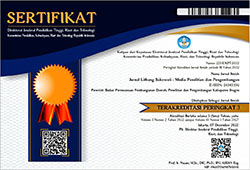ESTIMASI INDIKATOR KEMISKINAN TINGKAT KECAMATAN MENGGUNAKAN REGRESI KEKAR M-KUANTIL
DOI:
https://doi.org/10.32630/sukowati.v3i2.87Keywords:
influence function, m-quantile, poverty indicator, small area estimationAbstract
Poverty indicators such as Head Count Ratio (HCR), Poverty Gap (PG), and Poverty Severity (PS) are calculated by Statistics Indonesia (BPS) through National Socio-Economic Survey (Susenas) which only designed to estimate national, province, and regency/city level. Although Susenas has the large sample, it is not enough if used for small area direct estimation in sub-district level. To estimate until sub-district level, some BPS in district office enlarge the sample (oversampling) through an additional survey, called by Regional Socio-Economic Survey (Suseda) which need the more the human resource and the cost. We need a model based small area technique which only using the original sample (without oversampling) but it produce more accurate estimation. In this research, small area estimation is based on the unit level model with Population Census 2010 (SP2010) and Susenas 2015 as the providers of auxiliary/explanatory variables and the household per-capita expenditure as the response variables. This research using M-quantile regression model which robust to the outliers which utilizes influence function and quantile value in weighting the residual to produce regression coefficient estimates. To evaluate the accuracy of estimates (oversampling and M-quantile), we use RRMSE of sub-district level poverty indicators.
Downloads
Published
How to Cite
Issue
Section
License
Copyright (c) 2019 Nia Aprillyana

This work is licensed under a Creative Commons Attribution 4.0 International License.


















